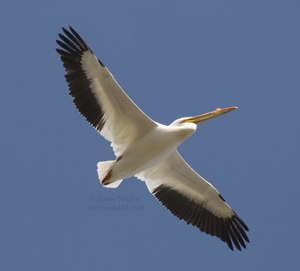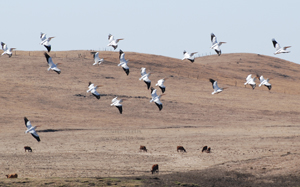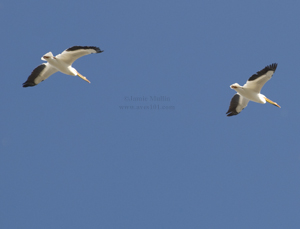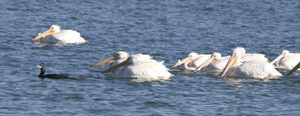American White Pelican
Order: Pelecaniformes
Family: Pelecanidae
Genus: Pelecanus
Species: erythrorhynchos
Description
-
Length: 62"
-
Wing span: 108"
-
Weight: 16.4 lb (7,500 grams)
-
Large white waterbird with a long bill, a leathery pouch, webbed feet and short legs
-
Large and heavy body with a short tail
-
Sexes look alike
-
Juvenile is similar to adult with dirty greay markings on the head and back
Factoids:
- Breeding on lakes throughout the northern Great Plains and mountain West, the American White Pelican is one of the largest birds in North America. It winters along the coasts, but breeds only inland
- The White Pelican does not dive for fish as the Brown Pelican does. Instead, it dips its head underwater to scoop up fish. Several pelicans may fish cooperatively, moving into a circle to concentrate fish, and then dipping their heads under simultaneously to catch fish
- Generally silent away from nesting colony. Nestlings give whining grunts for food; adults have low, hoarse display calls
- Unlike most birds, which warm their eggs with the skin of their breasts, pelicans incubate their eggs with their feet. They hold the eggs under the webs that stretch from the front toes to the hind toe, essentially standing on the eggs to warm them. This peculiar incubation method made them vulnerable to the effects of the pesticide DDT. The DDT made the eggshells thin, and the incubating parents frequently cracked their eggs
- A long-term decline stopped in the 1960s, and populations have increased since then
All photographs and audio clips are ©Jamie Mullin 2006
Sources: Cornell Lab of Ornithology & The Sibley Guide to Birds.
 |
|---|
 |
 |
 |
 |
 |